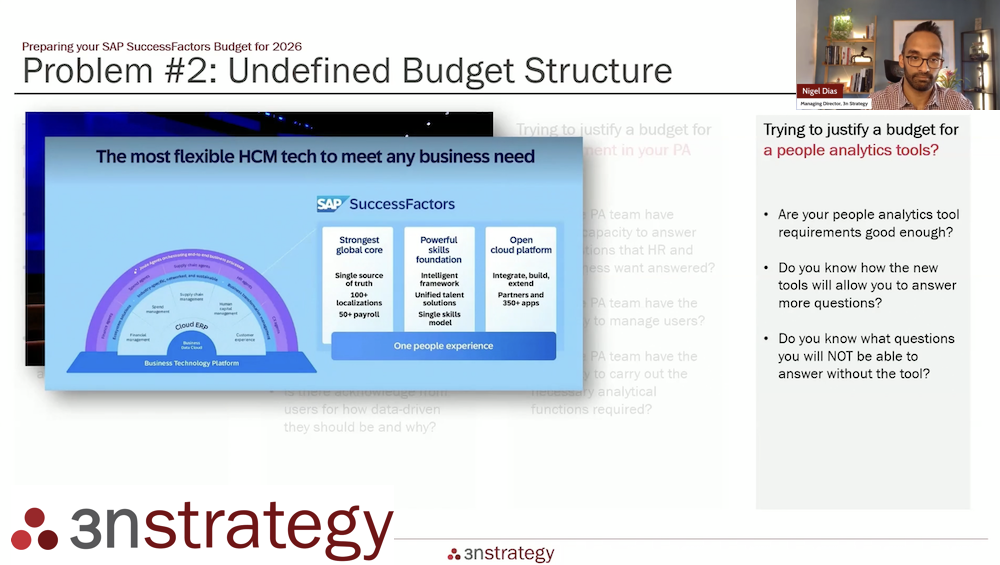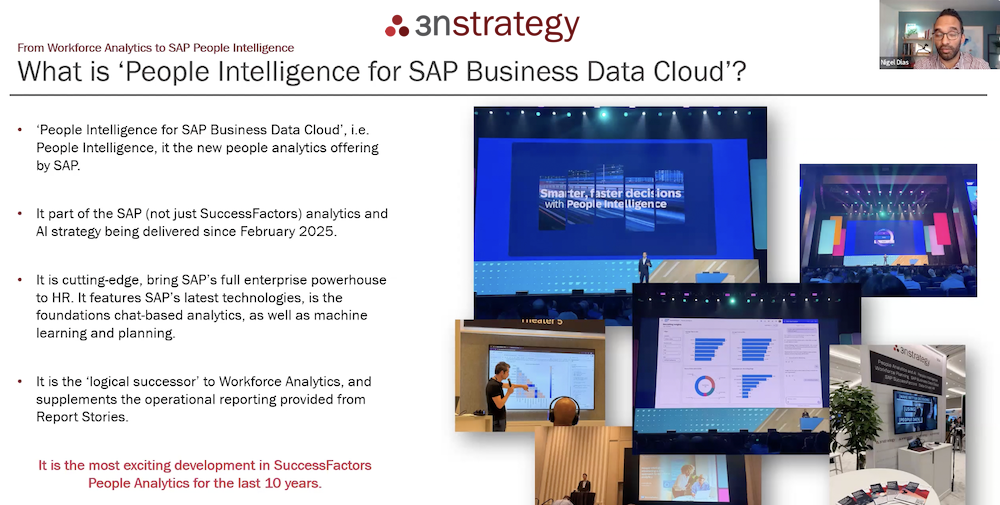In our recent webinar, “SAP SuccessFactors Sponsors: How To Boost Trust in your HR Data and Dashboards”, we explored the disconnect between what your data is actually telling you and what your HR teams believe it’s telling them.
The Real Problem: Perception vs. Reality
SuccessFactors sponsors often assume poor adoption stems from bad data. But in reality, the data might be accurate — it’s just not trusted. Users log into dashboards, see figures that don’t match their expectations, and quickly label the entire system as unreliable.
We unpacked how:
-
Perceived data quality can be lower than actual quality — and that alone can tank engagement.
-
Actual data issues (like misconfigured fields or poor governance) need fixing, but so do perception gaps.
-
Even high-quality data can go unused if users don’t understand metrics, definitions, or the data’s purpose.
Why “Good Enough” Is Good Enough
A critical insight from the session: not all data needs to be perfect. HR teams often believe data must be flawless to be useful — especially with the rise of AI. But in reality, knowing which fields truly matter (based on your analytics strategy) helps prioritize what needs cleansing, what doesn’t, and what’s already “good enough.”
We encouraged attendees to:
-
Use value roadmaps to align data strategy with organizational priorities.
-
Conduct field-level audits only where analytics impact is high.
-
Separate actual data flaws from user misperceptions before taking action.
How to Fix the Trust Gap
The webinar outlined a three-pronged approach:
-
Diagnose the gap – Audit both actual data quality and user trust levels.
-
Enable with purpose – Educate users about key fields, metric definitions, and what’s in it for them.
-
Drive change – Through targeted communication and training, perception can be elevated to match reality — even without a single data cleanse.
Real-world results show that when users are trained and engaged, their trust in data increases — regardless of whether the data actually changed.
Want the Full Picture?
If you're a SuccessFactors sponsor facing data trust issues, this webinar is packed with frameworks, practical strategies, and real-world examples to help you boost confidence in your dashboards and reporting tools.
👉 Watch the full webinar here and learn how to build trust, drive adoption, and unlock the full potential of your HR data.
.png?width=2433&height=555&name=3n%20Strategy%20PNG%20Logo%20(Transparent).png)




